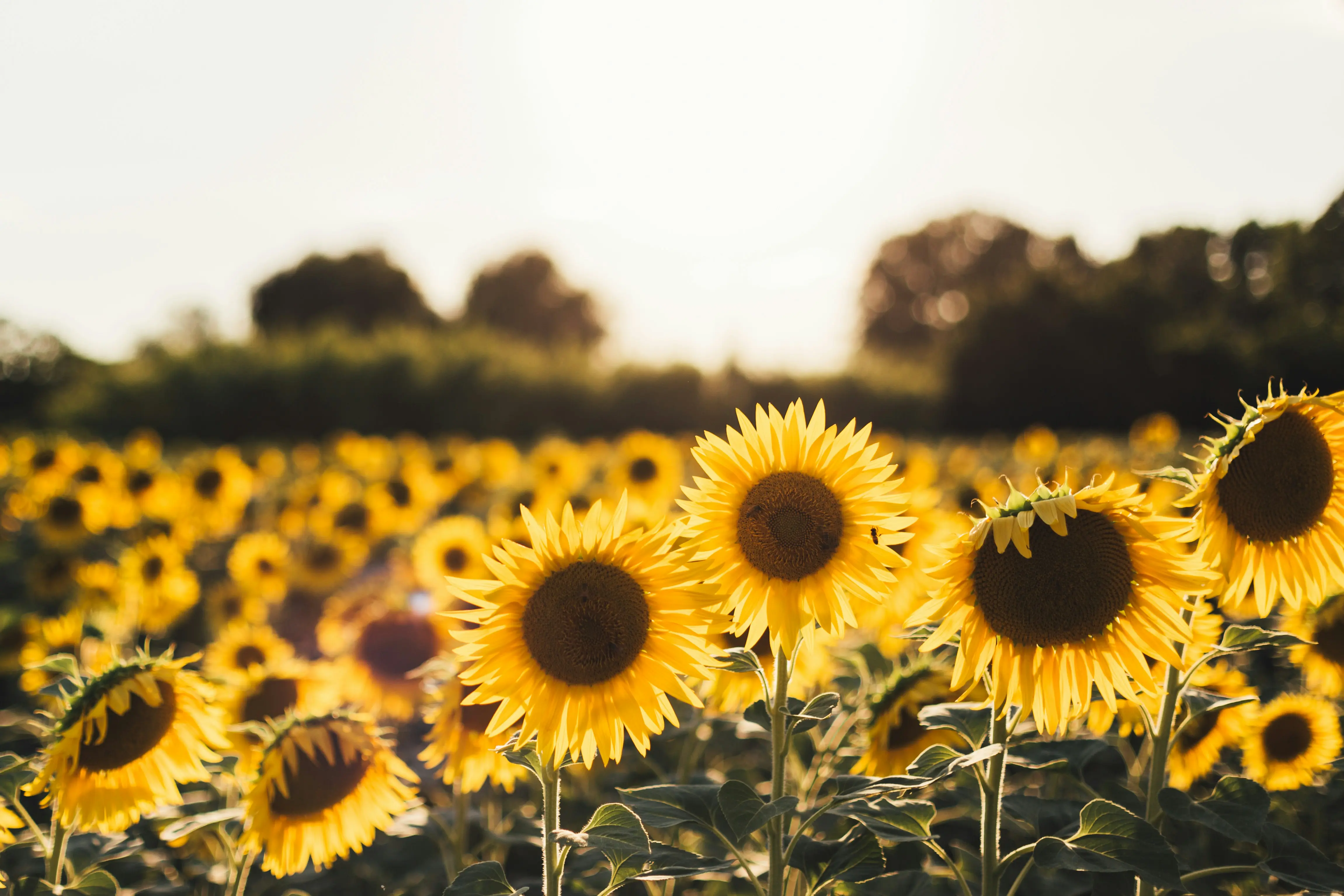Sunflower
Sunflowers (Helianthus annuus) are iconic summer plants celebrated for their tall stems, large golden blooms, and striking presence in any garden. Sunflowers are relatively easy to grow from seed, making them a popular choice for UK gardeners seeking dramatic floral displays and wildlife-friendly plants.
Types and Timing
Common sunflower varieties grown in the UK include single-headed types like ‘Sunspot’ and ‘Russian Giant,’ as well as multi-headed or branching types such as ‘Autumn Beauty.’ Dwarf varieties like ‘Teddy Bear’ are suitable for smaller gardens or container growing.
Sunflower seeds can be sown directly outdoors from late April to June once the soil has warmed, as they are frost-sensitive. For an earlier start, seeds can be started indoors in April and transplanted after the last frost. Most varieties bloom from mid-summer to early autumn, depending on sowing time.
Site and Soil Requirements
Sunflowers thrive in full sun and require at least 6-8 hours of direct sunlight daily. They prefer well-drained, moderately fertile soil enriched with compost or organic matter. Heavy clay soils can be improved with sand and compost to ensure proper drainage.
These plants are ideal for borders, wildlife gardens, allotments, or large containers. Taller varieties need ample space and protection from strong winds.
Propagation & Planting
Seeds can be sown directly into prepared soil about 2.5cm deep, spacing depending on variety - typically 30-45cm apart for tall types, and 20-25cm for dwarf types.
If starting indoors, sow seeds in pots 3-4 weeks before the last expected frost. Transplant seedlings carefully once they reach 10-15cm tall, ensuring the soil is warm and hardened off.
Growing & Maintenance
Sunflowers are low-maintenance but benefit from regular watering during dry spells, particularly when young or during flowering. Mulching around the base helps retain soil moisture and suppress weeds.
Tall varieties may require staking to prevent wind damage. Feed with a balanced fertilizer if growth appears slow or stems are weak. Sunflowers are generally hardy and resistant to most pests, though slugs and aphids can occasionally be a problem.
Harvest and Post-Harvest
For cut flowers, harvest when buds are just beginning to open. For seeds, allow heads to mature on the plant until the back turns yellow-brown. Cut heads and allow to dry in a well-ventilated area. Seeds can then be harvested for roasting, storage, or bird feed.
Sunflower seeds can be stored in airtight containers for several months. Flower heads are also attractive when dried for decorative arrangements.
Troubleshooting & Pests
Common issues include:
Leggy growth: Sow seeds directly in the ground and avoid overcrowding.
Wind damage: Stake tall varieties to prevent stems from breaking.
Pests: Birds may eat seeds before harvest; cover heads with netting if needed. Aphids or slugs can affect young seedlings but are usually manageable.
Tips from Growers / FAQs
Do sunflowers need feeding? Moderate feeding with compost or liquid fertilizer can improve growth and flowering.
Will they return every year? Sunflowers are annuals but can self-seed if conditions allow.
Can I grow sunflowers in pots? Yes, choose large, deep containers for tall varieties.
Are sunflowers safe for children/pets? Yes, they are non-toxic and safe to grow around pets and children.
Why plant sunflowers near vegetables? They attract pollinators and can act as a natural windbreak for smaller crops.
Resources & References
RHS - Sunflowers
Gardeners’ World - How to Grow Sunflowers
BBC Gardeners’ Tips - Sunflowers
Tags
© What to plant 2025. All rights reserved
